
We have some exciting news from Gerrys of Morecambe as we are proud to welcome Read more →
This is not a definitive guide to Bass fishing by the book, It’s more drawn from my own experience and tells of my own path to get where i am today, including mistakes made. Hope you find it helpful.
Bass are a sea going member of the Perch family, They arrive in most places in April/May but in other places they are year round residents, They hunt most species of small fish and crustaceans notably sand eels, small joey mackerel, whiting etc as well as being partial to peeler crab,prawns, shrimps,and both lugworm and ragworm will t empt them onto your hook.
empt them onto your hook.
They also being predatory fish, a lure fisherman’s dream as a well presented spinner or plug will be attacked with aggression as will flies presented in a life like way.
In winter the bass migrate into the warmer waters around the Portuguese coast and south around the North African coast, Then in spring they start returning into our waters as the sea temp rises and the crabs begin their first peel. I always watch the sea temp maps and when the temp hits around 11/12 degs i know the Bass are not far away.
The larger fish arrive first followed by the smaller school Bass the same is in reverse in autumn when the school Bass are the first to leave followed by the larger fish,so your best chance of connecting with a monster is in April/May or Sept/Oct, I have found you very rarely find school Bass and large Bass in the same place.
Most of the larger fish I have caught have fallen to big peeler or soft crab in the springtime, When the cock crabs peel they tend to do it all at the same time and this proves irresistible to the Bass who will be scouring the rocks and seaweed looking for them attracte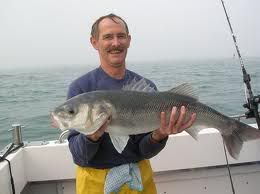 d by the acid that the crab secretes to dissolve its hard shell so it can shed it and grow.
d by the acid that the crab secretes to dissolve its hard shell so it can shed it and grow.
During this period the Bass are almost single minded and will ignore other baits feeding exclusively on crab.
After a few weeks the male crab peel is over and the females start to peel,this is the only time the female crab can mate so you quite often find a male standing guard over a smaller female peeler when you turn over a rock or pull back some weed.
A bit later in the spring when the sandeels arrive in numbers then Bass turn their attention to them, this is the point where the fly/plug/spinner angler comes into his own. By this time the Bass have turned their attention away from the crabs and towards the small fish and anything you can use that imitates the look and movement of a wounded sandeel/mackerel will induce a savage attack hopefully ending with your first beached Bass
In my early Bass fishing days I never understood this i had some nice fish on peeler crab in spring and stuck with it throughout the summer,never really trying any other method, so as the summer went on my catch rate dropped.Then one day me and a few mates were bass fishing the estuary at Borth in North Wales,we were all using fresh peeler crab and getting a few bites between us,One of the lads placed his rod on the rest and dug out a spinning rod casting a small toby into the surf and started taking a few school bass on it, I had my fly rod with me so I set that up and started casting just over the breaking waves with it after wading out waist deep . I was hitting the fish with every cast,54 school Bass in just over an hour, at high water it just stopped dead, the lads fishing with just crab had 4 between them, nothing over 2lb but plenty of them,that started me on the road to give the other methods a try.
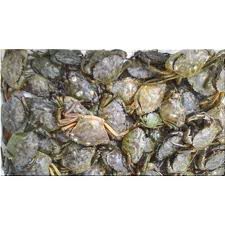 As explained earlier crabs need to shed their outer shell in order to grow, this is done by releasing an acid to soften the hard outer shell then the crab expands by sucking in water till the outer shell splits and it climbs out and hides under a rock,weed,or in mud and waits until its soft shell hardens up. its the acid that gives the game away to the Bass who know that when they get the scent of acid in the
As explained earlier crabs need to shed their outer shell in order to grow, this is done by releasing an acid to soften the hard outer shell then the crab expands by sucking in water till the outer shell splits and it climbs out and hides under a rock,weed,or in mud and waits until its soft shell hardens up. its the acid that gives the game away to the Bass who know that when they get the scent of acid in the
water there is a peeler near by.
You use crab as a bait by firstly (depending on the size of the crab) cutting it in half and mounting it on a large fine wire hook and using elasticated cotton to bind it on with, I then whip the cotton up the legs tying them to the line making the whole thing castable , if you have smaller crabs you can mount an entire crab again using elasticated cotton to whip it onto the hook. if you have removed the legs prior to whipping the crab up you can use them later to freshen up your bait ie use them on there own in a bunch
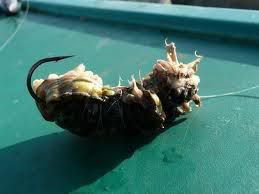
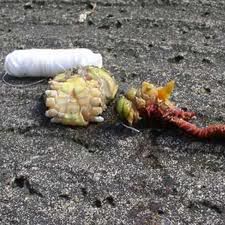
 Sand eels are available from about June through to Sept, finding somewhere that sells live eels is the trick, a few dealers in Wales have tanks for keeping them but not many, ABC tackle in Beamarris has them on the odd occasion. OR give the local shrimpers a few quid and an aerated bucket and they will get you as many as you want but be careful as sand eels don’t last long without a bubbler to oxygenate the water, they can be kept alive for several hours by placing an ice block in a cooler box and covering it with a damp towel/newspaper and laying the sand eels on it and covering them with more towel/news paper making layers of sandeels, make sure the paper is only damp though as too much water will drown the eels at the bottom.
Sand eels are available from about June through to Sept, finding somewhere that sells live eels is the trick, a few dealers in Wales have tanks for keeping them but not many, ABC tackle in Beamarris has them on the odd occasion. OR give the local shrimpers a few quid and an aerated bucket and they will get you as many as you want but be careful as sand eels don’t last long without a bubbler to oxygenate the water, they can be kept alive for several hours by placing an ice block in a cooler box and covering it with a damp towel/newspaper and laying the sand eels on it and covering them with more towel/news paper making layers of sandeels, make sure the paper is only damp though as too much water will drown the eels at the bottom.
some people simply nick the hook through the skin on the back of the head or below the gill covers when spinning them but i find that if just casting them out and ledgering with them its best to pass the hook through the wrist of the tail,fished with a size 1 aberdeen and a 10 foot trace it allows the eel to struggle on the sea bed and is irresistible to mr bassy as well as other fish.
I have caught bass on both lug and rag but mainly only schoolies, I have had 1 or 2 larger fish up to 7lb off the storm beaches in Wales but i suspect it’s because I was fishing over wormbeds and the fish were expecting to find them there. I try to avoid using worms off the boat because it seems to catch only schoolies whereas crab and sandeels have always seemed to catch larger fish.
You don’t usually associate whiting as bait but as a live bait they can be killers, freelined off a pier or a boat a small struggling fish must be irresistible to a hungry bass, i have never tried it myself as every time I have been bass fishing i have never caught a small whiting or mackerel to try it with, but the first time i do catch one its going on the hook.
Stories of 12lb monsters swallowing whole mackerel spring to mind,
That leads me on to bait size, if you ever catch a big bass look at the size of its mouth,its huge, I have gutted them and found crabs the size of my fist inside the stomach, so don’t ever think that the bait is too big its not,
One lad fishing Penmon point a few years ago was telling how after feathering for mackerel he livebaited a full sized one one and tossed it into the current using a balloon as a float, before it had drifted 50yds it was hit by an 8lb bass. i love that place.
Good bass fishing marks are like gold dust,and no bass angler will give his favourite spots away, me included but Bass like food holding areas ie the mouths of estuaries where the sandeels gather in huge numbers, any tidal rip where the current caused turbulence,ie the swellies in the Menai Straits,
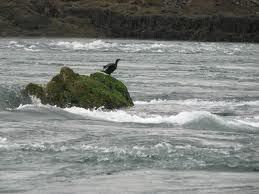
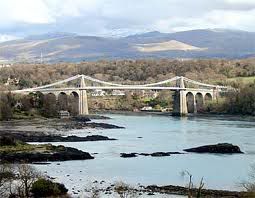
sand banks again for the sandeels.and rock ledges where the bass are mooching for food in between the crevices.
When beach fishing for them there are 2 golden rules
1/ don’t cast too far, the general rule being just behind the third breaker where the food is churned up by the wave action gets concentrated, the bass patrol up and down the beach picking off everything edible, quite often while wading out into the water, you see the fish darting up and down behind you.
2/ hold your rod, bass hit so hard and fast that if your rod is sitting in a rod rest,by the time you see the bite pick up the rod and strike the bass is miles away after sucking every bit of bait off your hook.sometimes you get lucky and the fish hooks its self but most of the time you will miss the fish.
Having used various plugs and spinners i can say that I have never really had much luck with spinners, I have caught loads of fish on them but never the ones I am targeting,I have had Pollack, mackerel, garfish in fact a multitude of species but never a bass and that’s what i am aiming for every time i pick up a spinning rod.
Plugs on the other hand are a different kettle of fish, never caught anything else in this country but bass with them, in Belize we caught snook,barracuda,and all kinds of weird and wonderful things of many colours but here just bass.

If you take notice of just one thing out of all this let it be this, DON’T BUY CHEAP PLUGS! They don’t swim correctly and if you are trolling them behind a boat they tip sideways and swim to the left or right and even turn over and shoot to the surface. this is not so important if you are casting from the beach but i think that if you have paid the fuel money to get to your mark, spent all the time packing your gear etc why use a cheap lure and waste all that time and effort for the sake of a few pounds.
There are many good quality plugs on the market and each angler has his own favourites. ask 100 anglers for there best plug and you will get 100 answers all different !!
As a rule of thumb in water 10 feet deep i use surface poppers like the storm chug bug and various sizes, start with the large one and them scale down if you are not getting any results.
In water up to 20 feet deep I tend to go with a rapala shallow diver that swims 6 foot below the surface, anything deeper I use a rapala or crystal minnow deep diving plug as near as I can get to a large sandeel or small mackerel.
try to retrieve in jerky movements and at different speeds moving your rod to the left or right sharply just remember its just a bit of plastic with a hook in it, its your job to make it look like a wounded fish, ball bearings inside the plug add the sound effects with a rattle to imitate the splashing of a wounded fish.if you are fishing a surface popper try to make it throw splashes of water up in front of it by jerking the rod every couple of turns of the handle, this again is making your bit of plastic look like a struggling fish easy prey.
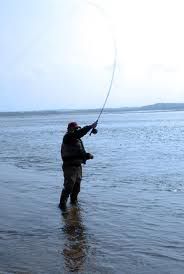
When buying your first outfit it is important to know that you need to match the rod and line for example a 7/8 weight rod is matched to a 7/8 weight line, this is important as a miss matched rod and line wont cast properly, if the line is too light it wont load the rod correctly, to heavy and it overloads the rod. as its the flexing of the rod that gives you a good cast this is vital.
When fly fishing you have no need of any kind of weigh as the line is the weight.the weight of the line is measured and rated as for eg #7 = a 7 weight line #8 =8 weight and so on for trout fishing 7/8 # is ideal ,its also perfect for bass fishing using smaller flys,but if you want to use large flys a heavier line would serve you better.
I use a 7/8 # for general fly fishing on a 10 foot rod but if I want to cast out large heavy flys i go up to a 10 # line on a salmon rod, this makes the casting a lot easier as the weight of the line carries the heavier flys out a lot further.
Fly lines come in different types, for example you might see them marked as WF8F this means weight forward 8# floating or DT8F double taper 8# floating double taper lines let you set your fly on the water without making a splash but as this is not as important in the sea you are better going for the weight forward type as this allows you to cast further as the whole weight of the line is towards the front end.
sinking line is also a handy thing to use in the sea if the water is deeper as it sinks to the sea bed and can drag a sand eel through the sand making it look like the real thing this would be shown as WF 8# FS = weight forward 8# fast sinking. 
When i first started fishing with a fly rod it was for trout on a lake,in many ways trout and bass are similar both are predatory and both attack savagely so its not such a big leap to be standing on a beach casting a fly into the surf.
just think about what a bass will be hoping to find while it patrols the breaking waves, small sand fleas washed out of the surf lashed sand, small crabs n shrimps etc you have a fly that copies all of these,if not make your own.
with a fly rod you can present your fly with absolute precision and give it movement exactly like the real thing, most of my fly fishing for bass is done with a lure,this is to all intents and purposes a mackerel feather fished on its own but using marraboo instead of an actual feather gives it a lifelike quality that is hard to beat.

I also make sand eel flies, these don’t really look like sandeels but when they are retrieved and are darting through the sand they are close enough.
Before you can go out and give it a go you have to get over a major hurdle LEARNING TO CAST. its not as easy as it looks, and everything that you think makes a good cast doesn’t. its all about technique, not brute force and its something that just all comes together like riding a bike one day you can’t do it and the next day you get it.
I hope this has given you a taste for giving Bass fishing a go,whatever method you decide to use it becomes an addiction, for me no other type of fishing holds a candle to it, in winter i will fish for cod but all the time I am waiting for the spring to come around so I can get into Wales and hit the bass,you cant beat it.
Many thanks to Glenn Kilpatrick of http://www.whitbyseaanglers.co.uk for allowing use of some of his images in this article.






CRAIG
Thank you for the advice. As its my first year and im learning the sea fishing art ive founs this information great. I will be down at colwyn bay tomorrow for a couple of nights and may venture further round the coast. Many THANKS